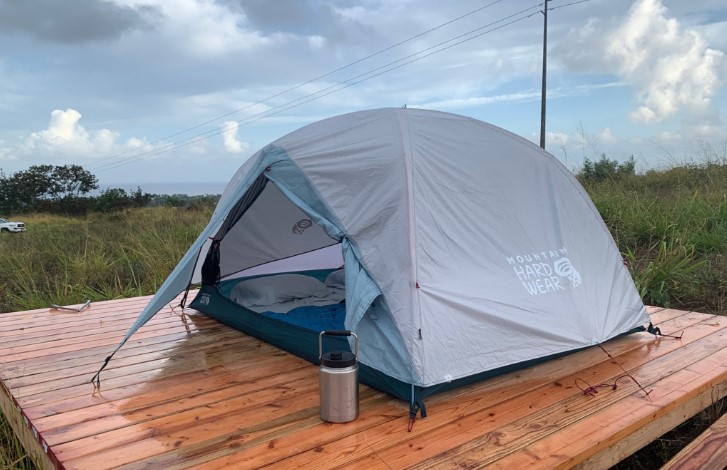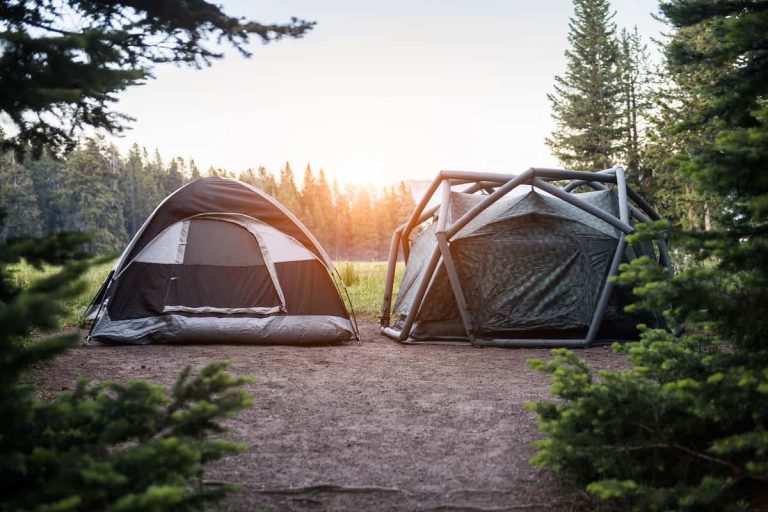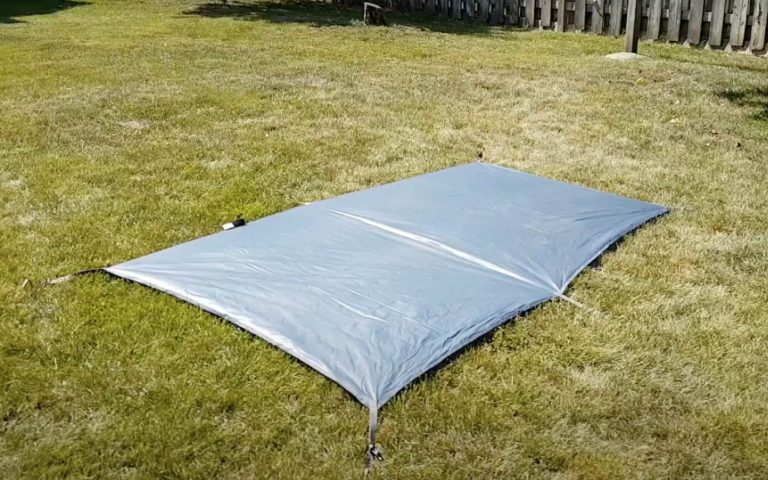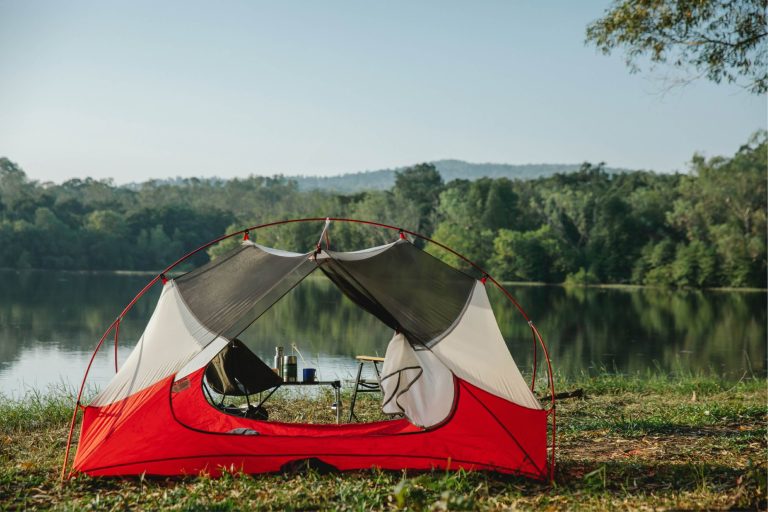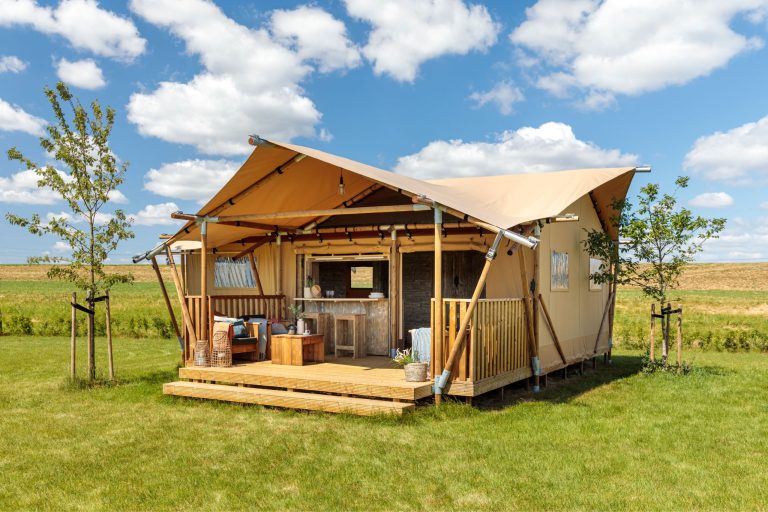How to Store a Tent Safely (Expert Advice)

Camping trips are a great way to disconnect from the hustle and bustle of everyday life and reconnect with nature. And while the adventure and excitement of exploring the great outdoors are often the focus, it’s equally important to pay attention to the care and maintenance of your camping equipment, especially your tent.
Properly storing your tent after each trip can significantly extend its lifespan and ensure its reliability for future use. In this comprehensive guide, we will walk you through the step-by-step process of how to store a tent safely. So let’s dive right in!
Table of Contents
Step 1: Clean the Tent Thoroughly
After returning from a camping trip, it’s essential to clean your tent thoroughly to remove any dirt, sand, tree sap, bird droppings, and other debris that may have accumulated during your adventure. Neglecting to clean your tent can lead to musty odors, deterioration of the fabric, and a decrease in its overall lifespan.
To clean your tent, you’ll need some cold water, a mild detergent, and a sponge. Start by gently wiping the tent’s exterior with the soapy water, paying close attention to any stubborn stains. For tougher stains, you can use an alcohol-based hand sanitizer. Be sure to avoid using hot water or harsh cleaning agents, as they can damage the fabric and coatings of the tent.
Additionally, it’s a good idea to use a toothbrush to clean the zippers, ensuring they remain smooth and functional. Once you’ve cleaned the tent, allow it to air dry completely before moving on to the next step.
Step 2: Thoroughly Dry Your Tent
Before storing your tent, it’s crucial to ensure that the tent is completely dry. Moisture left on the fabric can lead to mildew growth, unpleasant odors, and a decrease in the tent’s waterproof capabilities. To dry your tent, hang it in a well-ventilated area, such as a clothesline or a sturdy branch. Ensure that the tent is fully extended to allow for maximum airflow.
Avoid using direct heat sources, such as heaters or hairdryers, as they can cause damage to the fabric. Instead, rely on natural air circulation to dry your tent thoroughly. It may take several hours or even overnight for the tent to dry completely, depending on the weather conditions. Once the tent is dry, proceed to the next step.
Step 3: Store the Tent Loosely

When it comes to storing your tent, it’s best to avoid using the stuff sack that it came with. While the stuff sack may seem like a convenient option, it can compress the tent and prevent proper ventilation, potentially leading to mold and mildew growth.
Instead, opt for a loose storage method. Start by removing the tent from the stuff sack and gently folding it. Avoid creasing the same spots repeatedly, as this can weaken the fabric and lead to premature wear and tear. Instead of folding, it’s recommended to loosely stuff the tent into an old cotton pillowcase or a breathable storage bag. This allows the fabric to breathe and prevents the formation of mold and mildew.
Step 4: Reduce Tension in the Tent Poles
Properly storing the tent poles is just as important as storing the tent itself. Tension in the tent poles can cause stress on the cord and decrease its lifespan. To reduce tension, it’s recommended to store the tent poles partially assembled. If you have enough space, storing the poles in their partially assembled state is the ideal method.
However, if space is limited, start collapsing the poles from the middle and work your way towards both ends. This evenly distributes the tension on the cord and helps prevent any unnecessary strain. Taking the time to reduce tension in the tent poles will ensure their longevity and functionality for future camping trips.
Step 5: Choose the Right Storage Location
The location where you store your tent plays a crucial role in its overall condition and longevity. When choosing a storage spot, aim for a cool, dry, and well-ventilated area. Excessive heat can damage the fabric and coatings, while dampness can lead to mold and mildew growth.
Here are a few options for storing your tent:
- Garage or Gear Closet: If you have access to a garage or a dedicated gear closet, these are excellent locations for storing your tent. They typically offer cool temperatures, protection from the elements, and adequate ventilation.
- Under-Bed Storage: If space is limited, storing your tent under your bed can be a practical solution. Ensure that the area is clean, dry, and well-ventilated.
- Dry Basement: If your basement is dry and adequately ventilated, it can provide a suitable storage option for your tent. However, avoid storing the tent directly on the floor, as this can increase the risk of moisture buildup.
- DIY Gear Wall: For camping enthusiasts who want to showcase their gear even when not in use, consider creating a DIY gear wall. This wall can serve as a stylish storage area for all your camping equipment, including your tent. It not only saves space but also adds a decorative element to your home or garage.
How to Store a Tent Safely: Additional Tips
In addition to the main steps outlined above, here are a few extra tips to ensure the ideal storage conditions for your tent:
1. Keep Your Storage Space Organized
Maintaining an organized storage space is essential for easy retrieval and efficient packing for future camping trips. Label your gear properly and consider using clear stackable bins to keep everything organized and easily accessible.
2. Use Silica Gel Packages for Extra Dryness
To prevent moisture buildup, consider placing silica gel packages in the storage area along with your tent. These gel packets are excellent moisture absorbers and can help keep your tent dry for an extended period.
3. Avoid Compression Sacks for Long-Term Storage
While compression sacks are useful for portability, they are not ideal for long-term storage. Compression can put unnecessary pressure on the fabric and coatings, potentially compromising their integrity. It’s best to use compression sacks only for temporary storage during travel.
How to Store a Tent Safely: Conclusion
That is all you need to know about how to store a tent safely. Properly storing your tent is essential for maintaining its longevity and ensuring reliable performance for future camping trips. By following the step-by-step guide outlined in this article, you can ensure that your tent remains in optimal condition, free from mold, mildew, and unnecessary wear and tear.
Remember to clean your tent thoroughly, dry it completely, store it loosely, reduce tension in the tent poles, and choose the right storage location.

Meet Sarah, a passionate traveler and camping enthusiast who loves to explore the great outdoors. With years of exploring, she has become an expert in testing and reviewing the best tents on the market which got her to start mytravelingtents.com. Her insightful reviews provide valuable information to fellow adventurers looking for the perfect tent for their next camping trip.
